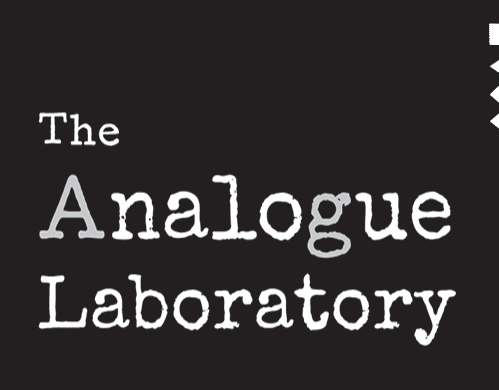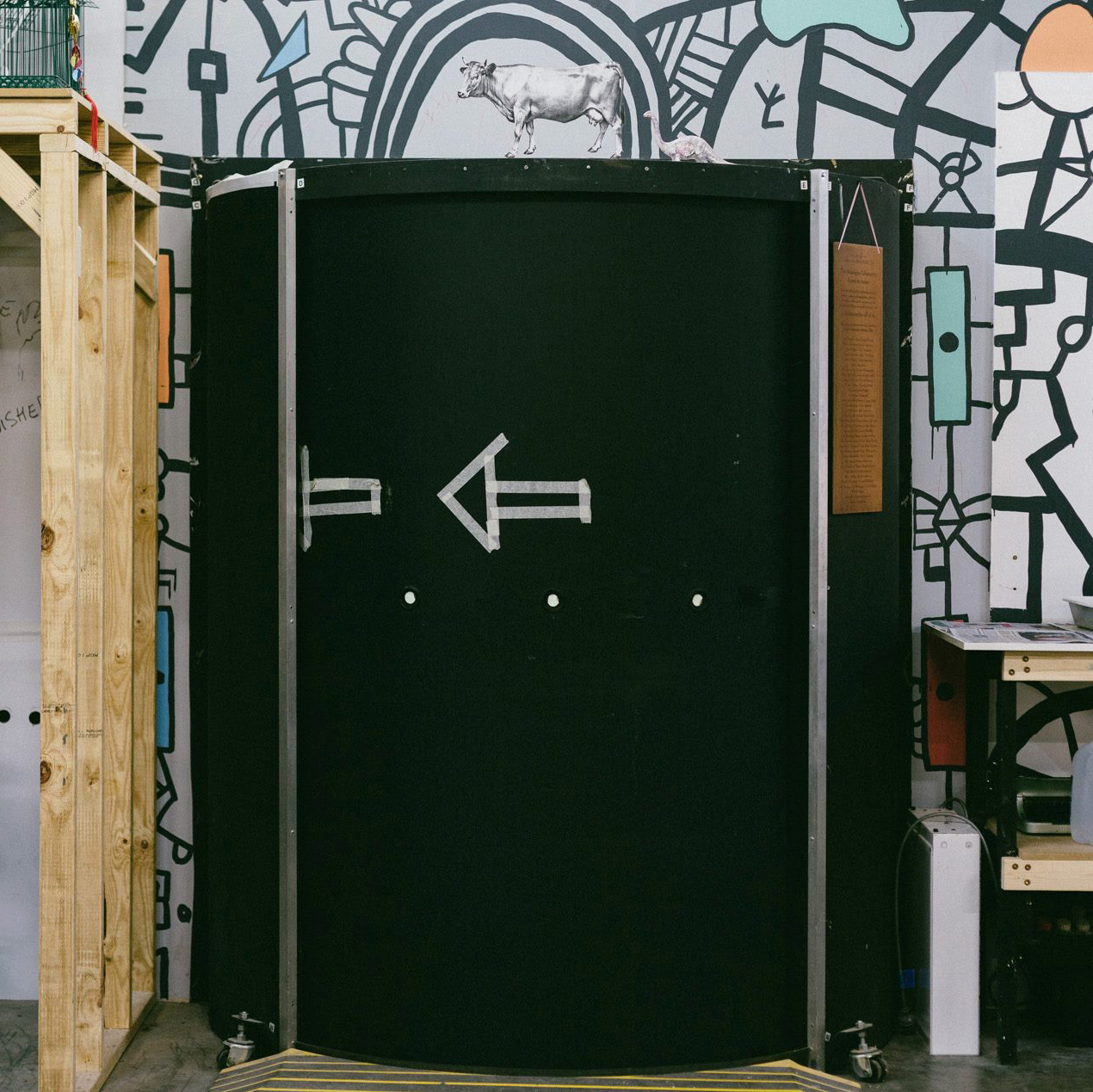
Internet, meet The Analogue Laboratory. You guys have been flirting for a while, but it’s time to get some details out in the open. At the moment the Lab is pretty idle most weekdays. We think that’s a bit sad. Then we thought if we introduced everybody properly, maybe we could get this party started.
By way of introduction, our friend Tash McCammon made a little video of the Lab in action during some of our recent workshops. It’s a nice place to start.
The Analogue Laboratory is made up of two light-tight, ventilated darkrooms.
The main darkroom is accessed through a very large spinny light-tight door that we call The Tardis. Inside are six enlargers, each with a digital timer and a range of easles. The bright orange fibreglass sink can handle trays up to 16×20″ (or larger if you don’t need three at once) and the print washer is enormous. We also have a print dryer that keeps the room toasty in the wintertime, and an 11×14″ archival print washer for fibre prints. When all six enlargers are on the go its a happy feeling – not a squeezy one. It’s a lovely place to spend a day making black and white silver gelatin prints. We are really proud of it.
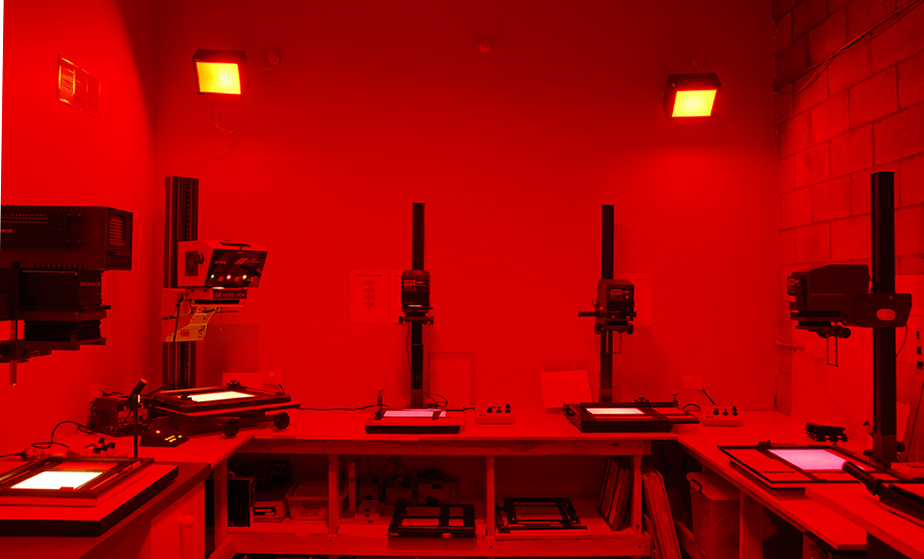
There are three very friendly LPL System 7700 Pro enlargers capable of 35mm or 120 film enlargements. We usually suggest that people who are new to wet process photography start on these tidy units as they are so easy to use.
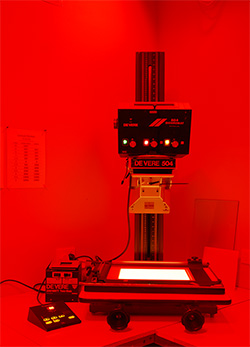 In the corner sits Marvin, a De Vere 504 Dichromat. It can handle film formats from 35mm through 4×5. It is a large unit and a bit cranky to use until you get the hang of the big knobs at the front. It also has the unfortunate habit of making rude digital bleeps and bloops. Essentially he has a great deal in common with the robot Marvin from the Hitchhikers Guide series by Douglas Adams. We love him a lot. Marvin has a colour head and can be used for both black and white and colour printing, when the opportunity presents itself.
In the corner sits Marvin, a De Vere 504 Dichromat. It can handle film formats from 35mm through 4×5. It is a large unit and a bit cranky to use until you get the hang of the big knobs at the front. It also has the unfortunate habit of making rude digital bleeps and bloops. Essentially he has a great deal in common with the robot Marvin from the Hitchhikers Guide series by Douglas Adams. We love him a lot. Marvin has a colour head and can be used for both black and white and colour printing, when the opportunity presents itself.
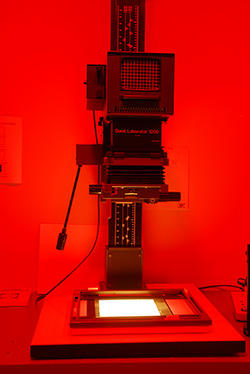 Professor Nigel, a Durst Laborator 1200 has a habit of dominating the room. He was rescued from certain death when the electron microscope at Flinders Medical Centre found a new digital output friend, and the Medical Centre didn’t need him any more. Nigel is named after the emeritus professor who looked after the electron microscope, and who helped load the colossus into the back of Alex’s car. Nigel can handle negatives from 35mm through to 4×5, and has a glass negative carrier for oddly shaped negative-like things. He’s very handy, and lovely and smooth to use if you can get past the intimidating bulk of him.
Professor Nigel, a Durst Laborator 1200 has a habit of dominating the room. He was rescued from certain death when the electron microscope at Flinders Medical Centre found a new digital output friend, and the Medical Centre didn’t need him any more. Nigel is named after the emeritus professor who looked after the electron microscope, and who helped load the colossus into the back of Alex’s car. Nigel can handle negatives from 35mm through to 4×5, and has a glass negative carrier for oddly shaped negative-like things. He’s very handy, and lovely and smooth to use if you can get past the intimidating bulk of him.
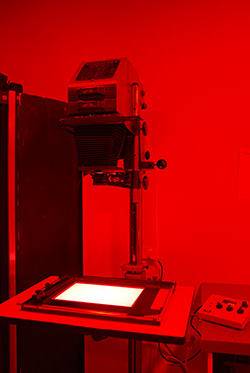 The Grandpappy of the darkroom is Heidegger a Durst Laborator 138S. Another gift from a generous donor, Heidegger is named after the thesis topic of his former operator – talented large format photographer Garry Sauer-Thompson. Heidegger has the unique talent of being able to make enlargements from glass and film negatives as big as 5×7. Heidegger has his own stand with castors, and can be used to make enormous mural prints on the darkroom wall without too much trouble. Pretty nimble for an old fella.
The Grandpappy of the darkroom is Heidegger a Durst Laborator 138S. Another gift from a generous donor, Heidegger is named after the thesis topic of his former operator – talented large format photographer Garry Sauer-Thompson. Heidegger has the unique talent of being able to make enlargements from glass and film negatives as big as 5×7. Heidegger has his own stand with castors, and can be used to make enormous mural prints on the darkroom wall without too much trouble. Pretty nimble for an old fella.
The little darkroom (aka The Secret Lab aka The Science Room) is where we process film, mix chemistry and do much of our personal alternative processes – especially Tintypes. It’s also where we keep all the cool science beakers and such. It has a super deep stainless steel sink easily big enough to take a bath in (but please don’t). At the moment Hyper Violet, our UV printing unit with a 24×28″ vacuum frame lives in the Little Lab, but we hope to put some castors on her and scoot her into the big darkroom pretty soon.
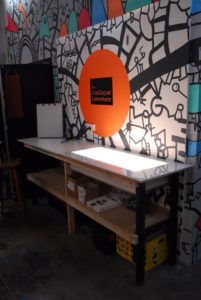 Outside the darkroom there is a set of industrial lockers for folks to pop their gear in while they are in the darkroom, and a long light table for cutting and sleeving negatives or getting your negative in the neg carrier just so. The rest of The Mill is also outside the darkroom (which is a funny way to put it, but true nevertheless) and while you’re working in the darkroom we encourage you to use the kitchen for cups of tea or to warm up your lunch, and please do take advantage of the contents of the cookie jar. There are assorted couches and chairs throughout the communal spaces for you to use to take a break (we all need those) and we keep a nice library of photography books.
Outside the darkroom there is a set of industrial lockers for folks to pop their gear in while they are in the darkroom, and a long light table for cutting and sleeving negatives or getting your negative in the neg carrier just so. The rest of The Mill is also outside the darkroom (which is a funny way to put it, but true nevertheless) and while you’re working in the darkroom we encourage you to use the kitchen for cups of tea or to warm up your lunch, and please do take advantage of the contents of the cookie jar. There are assorted couches and chairs throughout the communal spaces for you to use to take a break (we all need those) and we keep a nice library of photography books.
